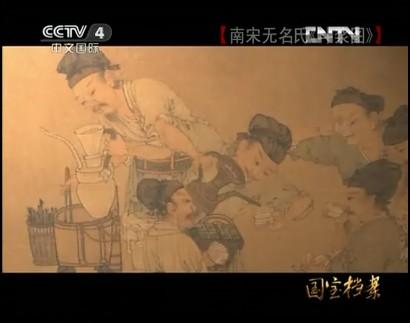Tea has been a part of Chinese civilization since its early days. For those who are counting, that makes it 5,000 years, give and take a couple of centuries.
Of course how tea was consumed then and how it is now is markedly different. Let us take a look at tea consumption through the ages.
Eat a Bowl of Tea

In the book “Er Ya” (尔雅) it described the consumption of tea as a broth or a stew (羹).
In a slave contract dated 59 BCE, during the Eastern Han era, the extensive job scope of the slave included these 4 words- “烹茶尽器” which literally meant “cook tea and wash the utensils”.
These 4 words, together with another line about “buying tea in Wuyang” proved that by 59 BCE, tea was a sold commodity in China with dedicated utensils.
More to the point of this article, the wording of the contract informed us that tea was “cooked”.
“Cooking’ or boiling the leaves remains common today, particularly among minority tribes such as the Hani tribe in Yunnan.
Decocted Tea
From that era onwards, there were many changes in the production and consumption of tea, however lack of documentation makes dating it difficult.
Thankfully for historians, the Sage of Tea- Lu Yu’s seminal work Cha Jing or The Classics of Tea- provided an important source of information how the varying developments in tea by the 8th century.
Thanks to this detailed treatise, we do know that by then, tea was decocted, or boiled to extract the liquid content.
In fact the word for decoct in Chinese is 煎 which was later adapted by the Japanese to denote Sencha or 煎茶.
Lu Yu’s work gave us a good indication on how tea was prepared:
i) Bring the water to the “first boil” (第一沸) which is about 80⁰C
ii) Add some salt to taste
iii) At the “second boil”- about 90⁰C, scoop out some water and add tea to it
iv) At the “third boil”- about 100⁰C, pour the scoop back into the vessel and stop boiling
It bears mentioning that the tea of the day took on 4 main forms:
i) Cakes (similar to Puer today) which were the most common
ii) Powder
iii) Loose leaf- quite uncommon
iv) “Coarse tea leaves”
The first 2 were the most common, especially among the affluent groups.
If you find the “powder” familiar, read on….
“Dian Cha” (点茶)

Yes, this is the basis of preparing matcha in Japanese tea ceremonies today.
During the Song Dynasty, preparing tea became a sport with “tea battles” being common place to see who can write poems with the foam or even devising some patterns. All these took place more than a thousand years before latte art!
The degenerate excesses of the Song Dynasty though came to a halt with the Mongolian invasion and the peasant revolution that resulted in the Ming Dynasty.
Infusion
The Ming Dynasty was founded by Zhu Yuanzhang aka Emperor Ming Tai Zhu who came from a humble background- no kidding, he even resorted to monkhood due to poverty in his youth.
Well acquainted with the hardship of the peasants, he outlawed the fanciful cakes and powders in favor of the simple loose leaf tea.
This brought about a plethora of advances such as the discovery of oolong and black tea as well as changed the method of preparing tea to “infusion”- that is adding of hot water to the leaves and decanting the liquid for consumption.
During the Ming and later the Qing Dynasty, tea consumption regained widespread popularity and while consumption habits evolved till this day, the basics remained the same.
*Note: The author refuses to dignify tea bags and Ready-to-Drink tea with inclusion to this article considering both an abomination to the tea leaf.
See here for more articles on the history of tea
